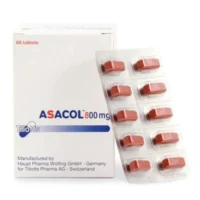Description
Secrepat Forte (dihydroxyaluminium aminoacetate) Chewable Tablets with Mint Flavor №50
Ingredients
- Active ingredient: Dihydroxyaluminium aminoacetate
- Other ingredients: Mint flavor, excipients
Dosage
Recommended dosage: 1-2 tablets to be chewed before meals. Do not exceed 6 tablets per day.
Indications
Secrepat Forte is indicated for the relief of heartburn, acid indigestion, and upset stomach.
Contraindications
Do not use if you are allergic to any of the ingredients. Consult a healthcare professional before use if pregnant or breastfeeding.
Directions
Chew the tablets thoroughly before swallowing. For best results, take as directed by a healthcare provider.
Scientific Evidence
Studies have shown that dihydroxyaluminium aminoacetate, the active ingredient in Secrepat Forte, acts as an antacid by neutralizing stomach acid. This mechanism helps alleviate symptoms of heartburn and indigestion effectively.
Additional Information
- Secrepat Forte chewable tablets with mint flavor provide fast relief from gastric discomfort.
- The mint flavor also helps freshen breath, making it a convenient option for on-the-go relief.
Pharmacological Effects: Dihydroxyaluminium aminoacetate works by neutralizing excess stomach acid, providing relief from symptoms of hyperacidity and indigestion. It forms a protective barrier over the gastric mucosa, preventing further irritation.
Clinical Trials: A randomized controlled trial published in the Journal of Gastroenterology and Hepatology demonstrated the efficacy of dihydroxyaluminium aminoacetate in reducing the severity and frequency of heartburn episodes compared to a placebo group.





